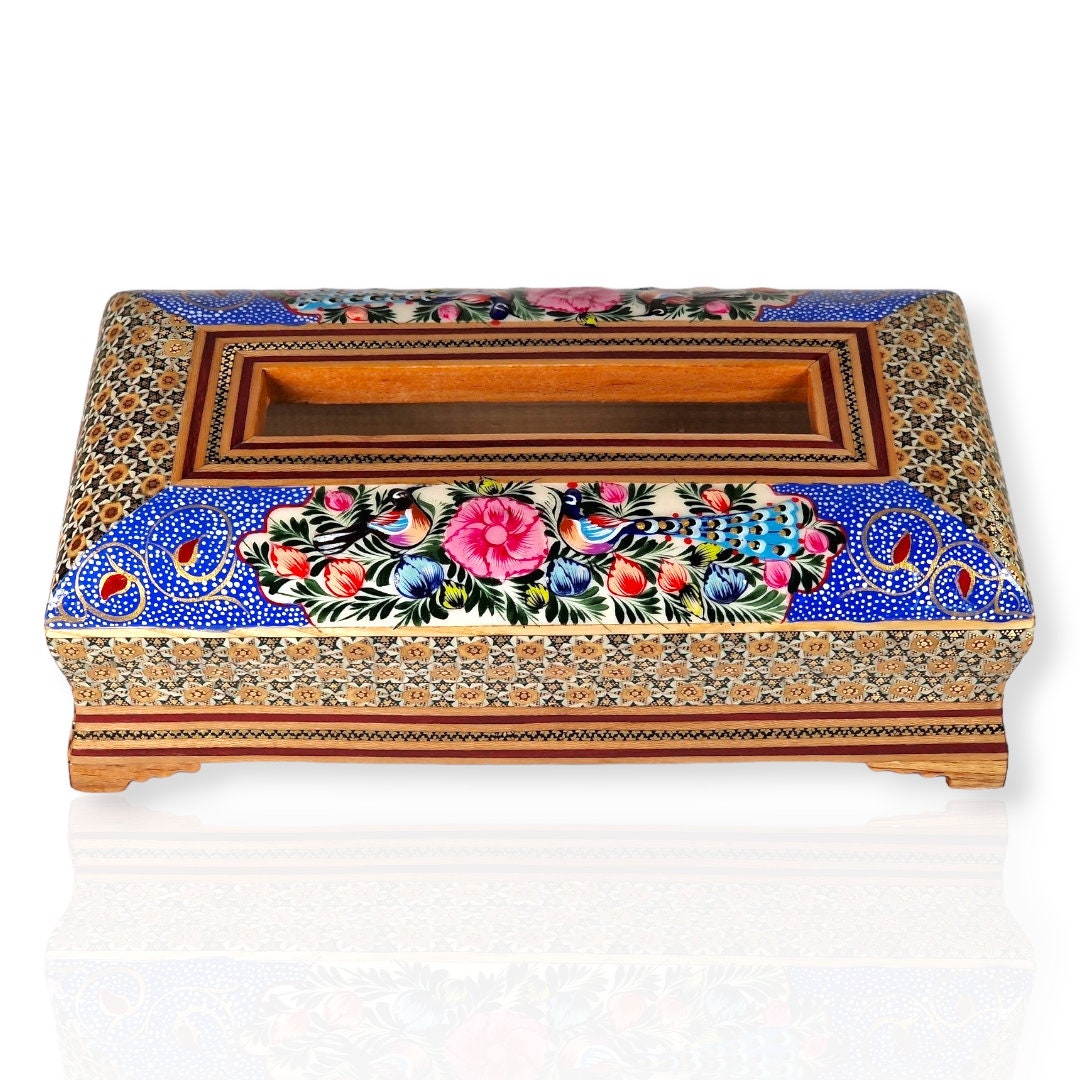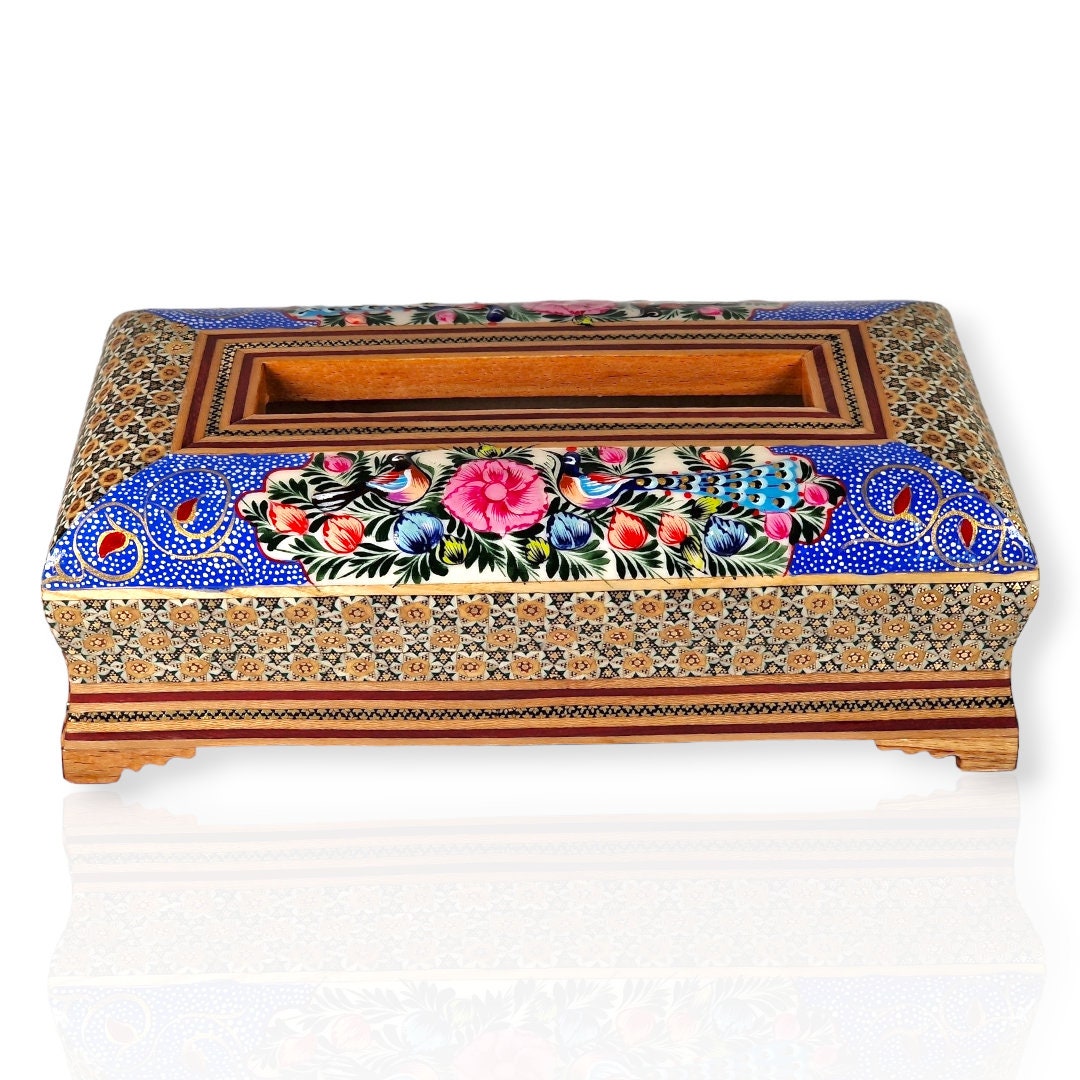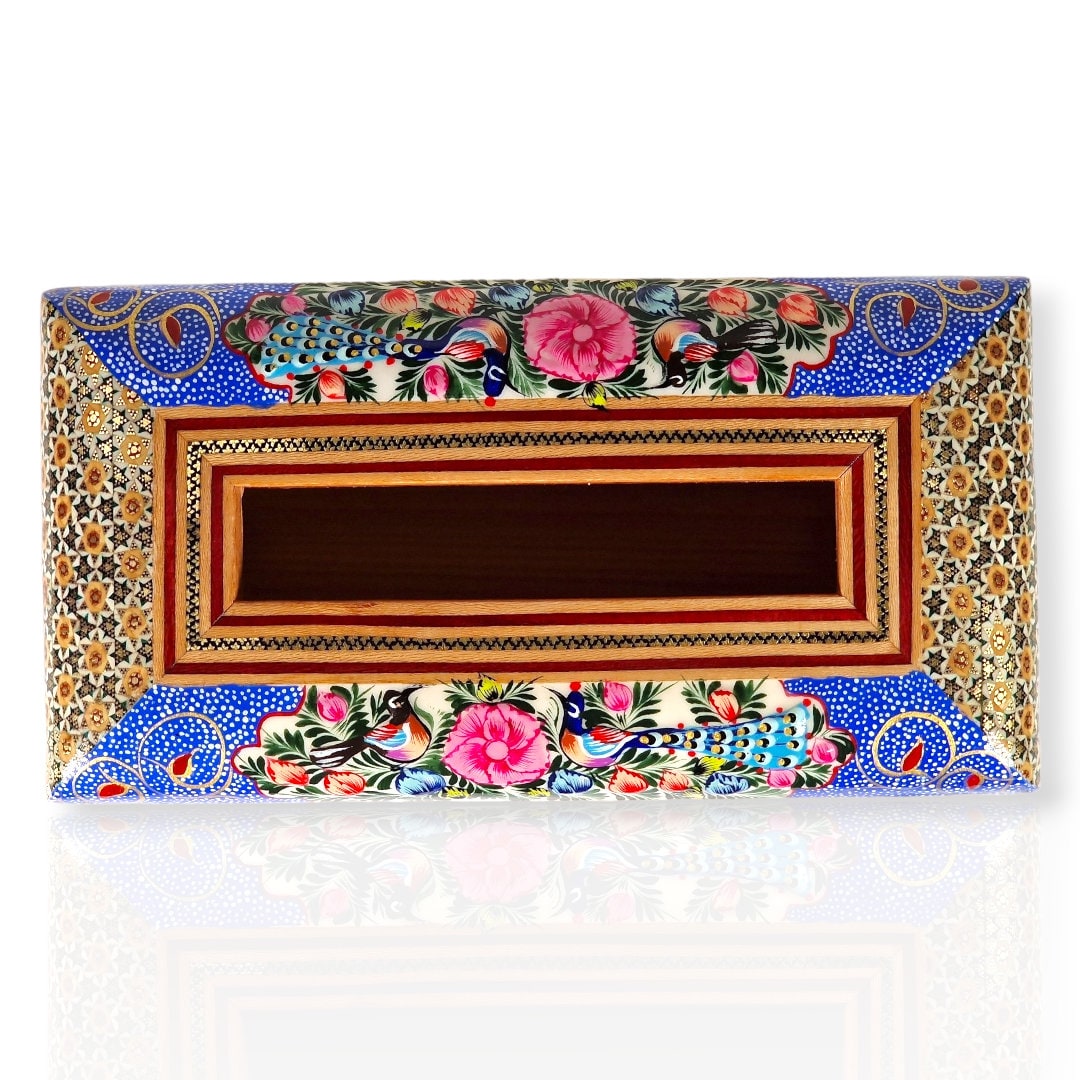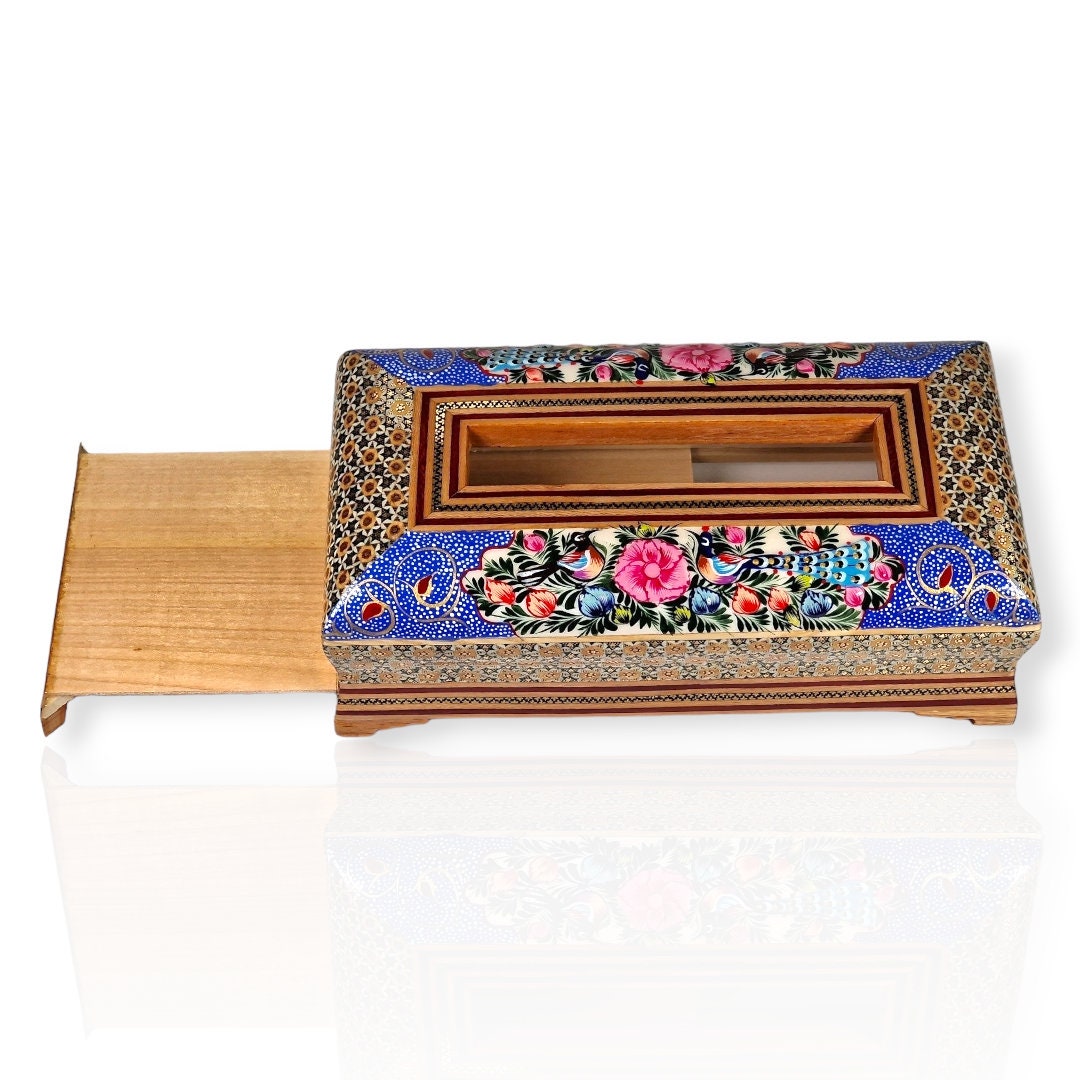Kervansara
Hand painted Persian art wooden marquetry napkin holder or "khatam kari" with a miniature enameled flower and bird design
Hand painted Persian art wooden marquetry napkin holder or "khatam kari" with a miniature enameled flower and bird design
Couldn't load pickup availability
Rectangular wooden napkin holder measuring 26.5 x 14 x 8.5 cm with a side opening at the bottom, hand-crafted and hand-painted with a cheerful and colourful miniature "gol o morgh" (flower and bird) design on which the enamel has been applied in relief.
In this famous design the protagonists resemble two lovers in the middle of a romantic argument where the bird is in love and the flower is its lover; such romantic arguments have been mentioned very often in Persian literature.
The other two sides and the entire side of the work are decorated with the laborious technique of "khatam kari" (marquetry), which gives a special shine and an exquisite finish to the whole.
What was once the Persian Empire is undoubtedly one of the most important centres in the world for the art of inlay, where it originated under the rule of the Seljuk dynasty, although its golden age came during the reign of the Safavid monarchs. It requires precise craftsmanship and a great deal of patience and delicacy to create such exquisite pieces that decorate boxes, jewellery boxes and pen cases as well as embellish frames, clocks, vases and backgammon sets, among many other objects.
The technique used by the artists consists of creating a kind of mosaic from a pattern of regular polygons that can vary in the number of sides and then decorating the desired surface with them, which is usually made of wood or metal. For this work, long wooden rods, camel bone for the white colour and metal (brass is usually used for the golden tones) are joined together to form triangles that are then pressed and cut into very thin sheets, preferably 1 mm thick, which will be the ones that adhere with great care to the utensil that is to be decorated.
Among the most common geometric designs are star-shaped patterns, and in the most valuable pieces precious metals such as gold or silver are used, and bone is replaced by ivory. To give you an idea of the complexity of this work, approximately 250 pieces of bone, wood and metal are needed to create just one cubic centimetre of khatam, and if the surface to be applied is curved, the sheet must be heated to make it flexible and therefore mouldable.
Share










